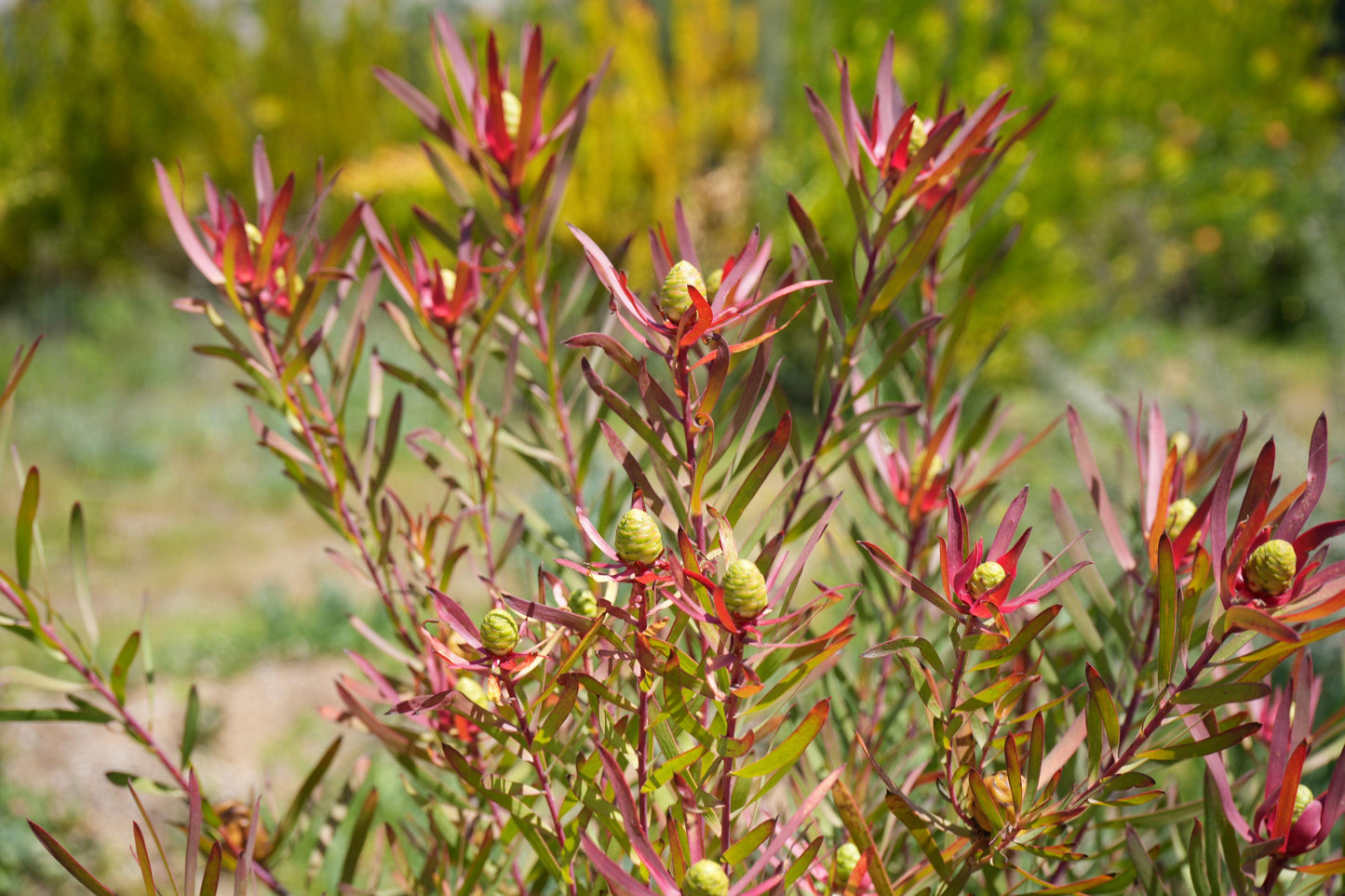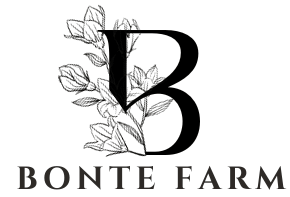Bonte Farm
Leucadendron ‘Red Ribbon’: Ignite Your Garden with Vibrant Crimson Elegance
Leucadendron ‘Red Ribbon’: Ignite Your Garden with Vibrant Crimson Elegance
Couldn't load pickup availability
Leucadendron ‘Red Ribbon’: A Striking Crimson Accent for Your Garden
Leucadendron ‘Red Ribbon’ delivers a dramatic visual impact with its vivid, deep red bracts that resemble vibrant ribbons, adding a touch of bold elegance to any landscape. This cultivar is prized for its intense color, compact growth, and unique floral display, making it a standout choice for gardeners seeking a distinctive and visually captivating plant. Its adaptability to well-drained conditions and its long-lasting, striking bracts contribute to its popularity in a variety of garden settings.
A Cascade of Crimson and Architectural Form:
- Distinctive Bracts: Leucadendron ‘Red Ribbon’ showcases prominent, cone-like flower heads surrounded by vibrant, deep red bracts. These bracts, which are modified leaves, provide the stunning color and ribbon-like appearance, creating a visually arresting display.
- Compact Growth: This cultivar exhibits a well-structured, compact, and upright growth habit, making it ideal for smaller gardens or as a feature plant in larger landscapes. Its evergreen foliage provides a lush, grey-green backdrop that beautifully accentuates the intense red bracts.
Botanical Characteristics:
- Scientific Name: Leucadendron ‘Red Ribbon’
- Growth Habit: Compact, upright shrub
- Foliage: Grey-green, needle-like leaves
- Bracts: Deep red, ribbon-like, surrounding cone-like flower heads
- Bloom Time: Late winter to spring
- Mature Size: 3-5 feet in height and 2-3 feet in width.
- USDA Hardiness Zone: 9-11 (best suited to warmer climates)
Cultivation and Care:
- Sunlight: Requires full sun, with a minimum of 6 hours of direct sunlight daily, to promote optimal bract coloration and growth.
- Soil: Thrives in well-drained, acidic to neutral soil. Sandy or rocky soils are ideal. Avoid heavy clay soils, which can lead to root rot and plant decline.
- Water: Water moderately during the establishment phase. Once established, it is relatively drought-tolerant. Allow the soil to dry slightly between waterings to prevent overwatering.
- Fertilizer: Light feeding with a low-phosphorus fertilizer designed for Proteaceae is recommended during the growing season. Avoid high-phosphorus fertilizers, as they can harm the plant.
- Temperature: Prefers mild to warm temperatures and is intolerant of heavy frost. Protection from frost is crucial in colder regions.
- Pruning: Light pruning after flowering can help maintain shape and encourage new growth.
Landscape Use:
- Specimen Plant: Makes a stunning focal point in gardens and landscapes, adding a burst of intense color and architectural interest.
- Coastal Gardens: Tolerates salt spray, making it suitable for coastal areas, where its vibrant coloration can create a striking visual impact.
- Rock Gardens: Its drought tolerance and striking bracts make it an excellent choice for rock gardens, where its architectural structure adds visual interest.
- Cut Flower Arrangements: The unique and long-lasting bracts are highly valued in floral arrangements, adding a touch of bold beauty.
- Container Planting: Thrives in containers, allowing for placement on patios and balconies, bringing a vibrant element to smaller spaces.
Wildlife Attraction:
- The blooms attract pollinators, including bees and birds, contributing to local biodiversity and enriching the garden ecosystem.
Pest and Disease Resistance:
- Generally resistant to most pests and diseases. Root rot can be a concern in poorly drained soils. Ensuring excellent drainage is crucial for plant health.
Propagation:
- Propagation is typically done through cuttings taken from semi-hardwood in the warmer months.
Incorporating Leucadendron ‘Red Ribbon’ into Your Landscape:
- Planting Location: Choose a sunny location with excellent drainage.
- Soil Preparation: Ensure the soil is well-drained and slightly acidic. Amend heavy clay soils with sand or other draining materials.
- Companion Plants: Pair with other drought-tolerant plants from the Proteaceae family or other plants from arid climates to create a harmonious and visually appealing landscape.
Relevant Plants: Leucadendron ‘Red Ribbon’, Leucadendron, South African plants, drought-tolerant shrub, coastal gardening, rock garden plants, cut flowers, protea cultivation, red bracts, evergreen shrub.
Share














